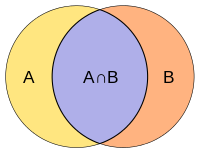
Photo from wikipedia
Temporal dominance of sensations (TDS) methods are used to record temporally developing sensations while eating food samples. Results of TDS tasks are typically discussed using averages across multiple trials and… Click to show full abstract
Temporal dominance of sensations (TDS) methods are used to record temporally developing sensations while eating food samples. Results of TDS tasks are typically discussed using averages across multiple trials and panels, and few methods have been developed to analyze differences between individual trials. We defined a similarity index between two time-series responses of TDS tasks. This index adopts a dynamic level to determine the importance of the timing of attribute selection. With a small dynamic level, the index focuses on the duration for attributes to be selected rather than on the timing of the attribute selection. With a large dynamic level, the index focuses on the temporal similarity between two TDS tasks. We performed an outlier analysis based on the developed similarity index using the results of TDS tasks performed in an earlier study. Certain samples were categorized as outliers irrespective of the dynamic level, whereas the categorization of a few samples depended on the level. The similarity index developed in this study achieved individual analyses of TDS tasks, including outlier detection, and adds new analysis techniques to TDS methods.
Journal Title: Foods
Year Published: 2023
Link to full text (if available)
Share on Social Media: Sign Up to like & get
recommendations!